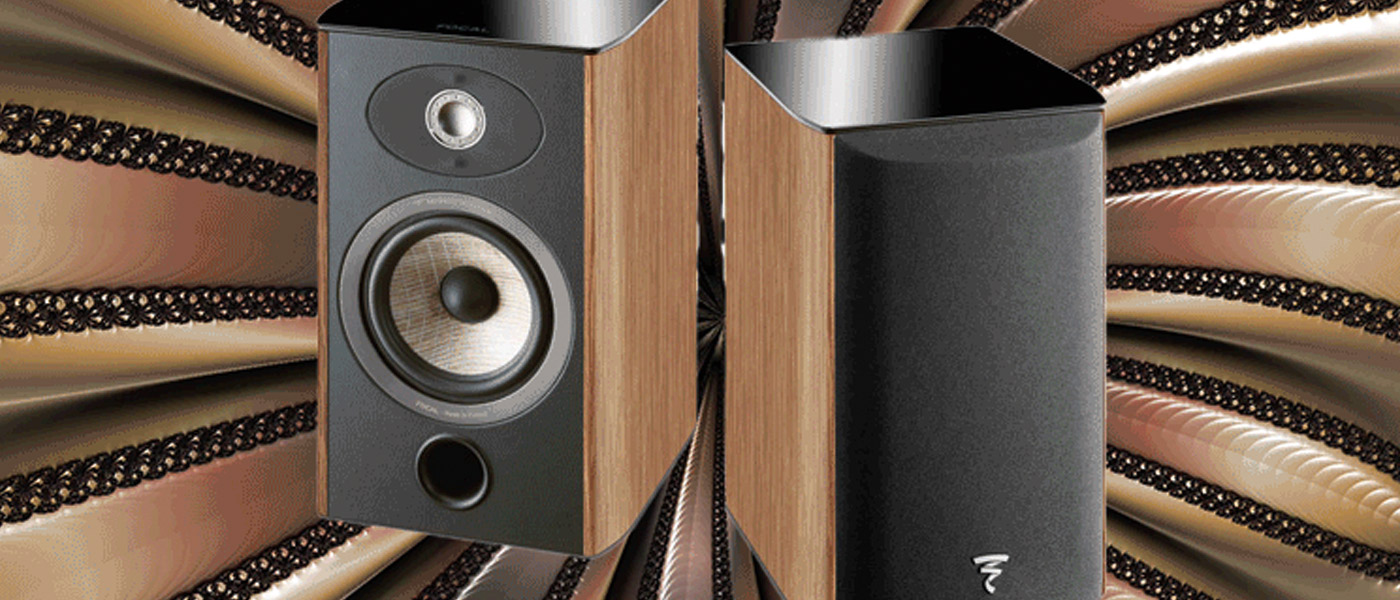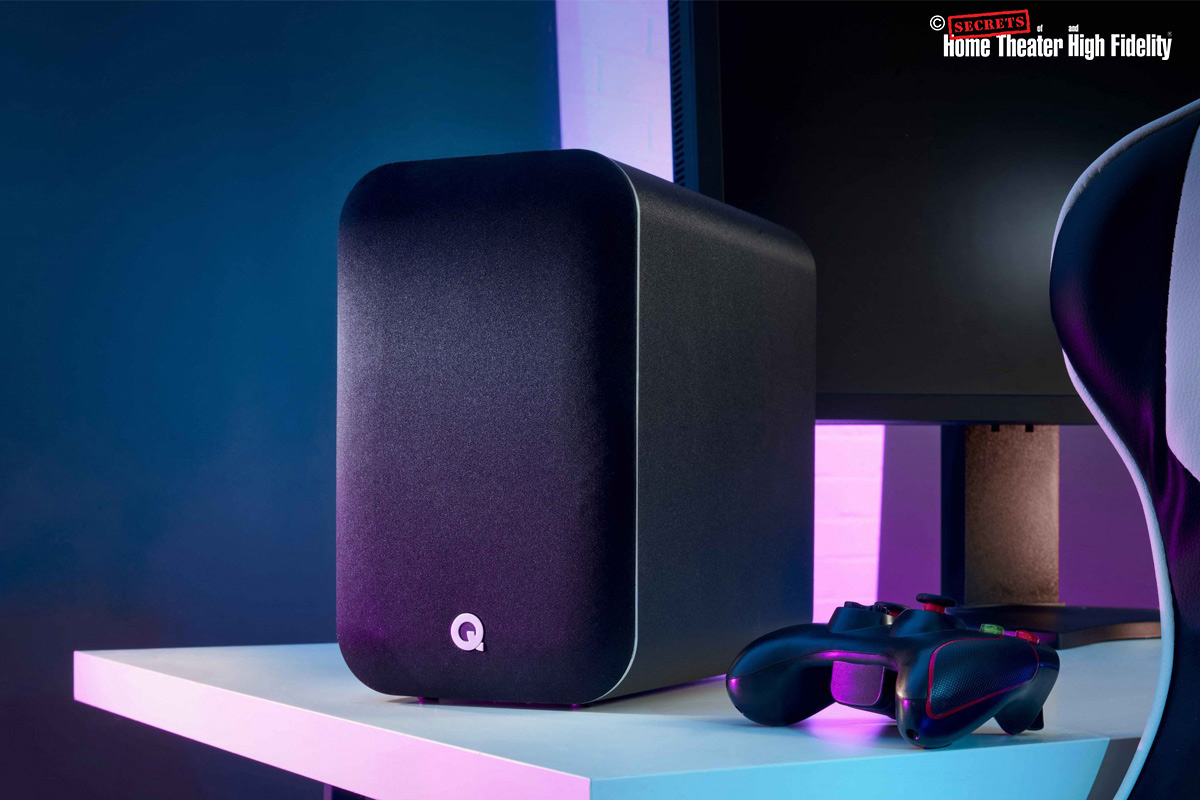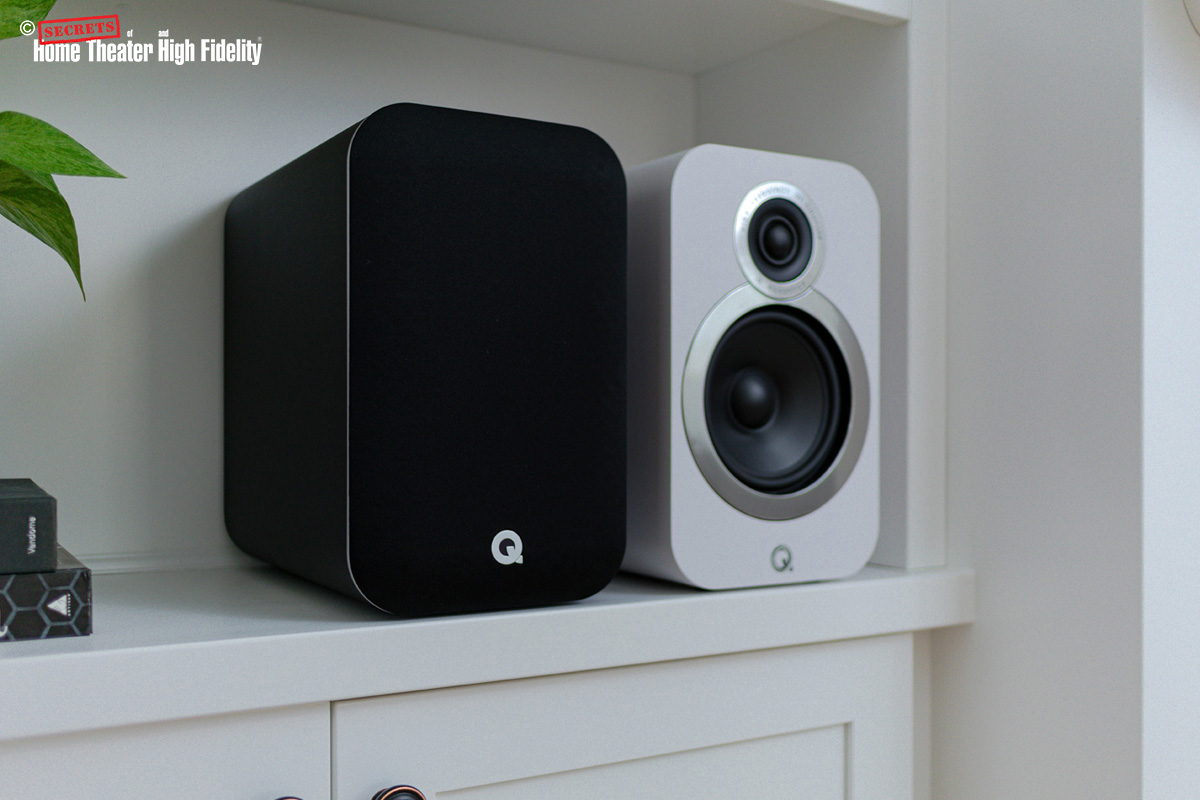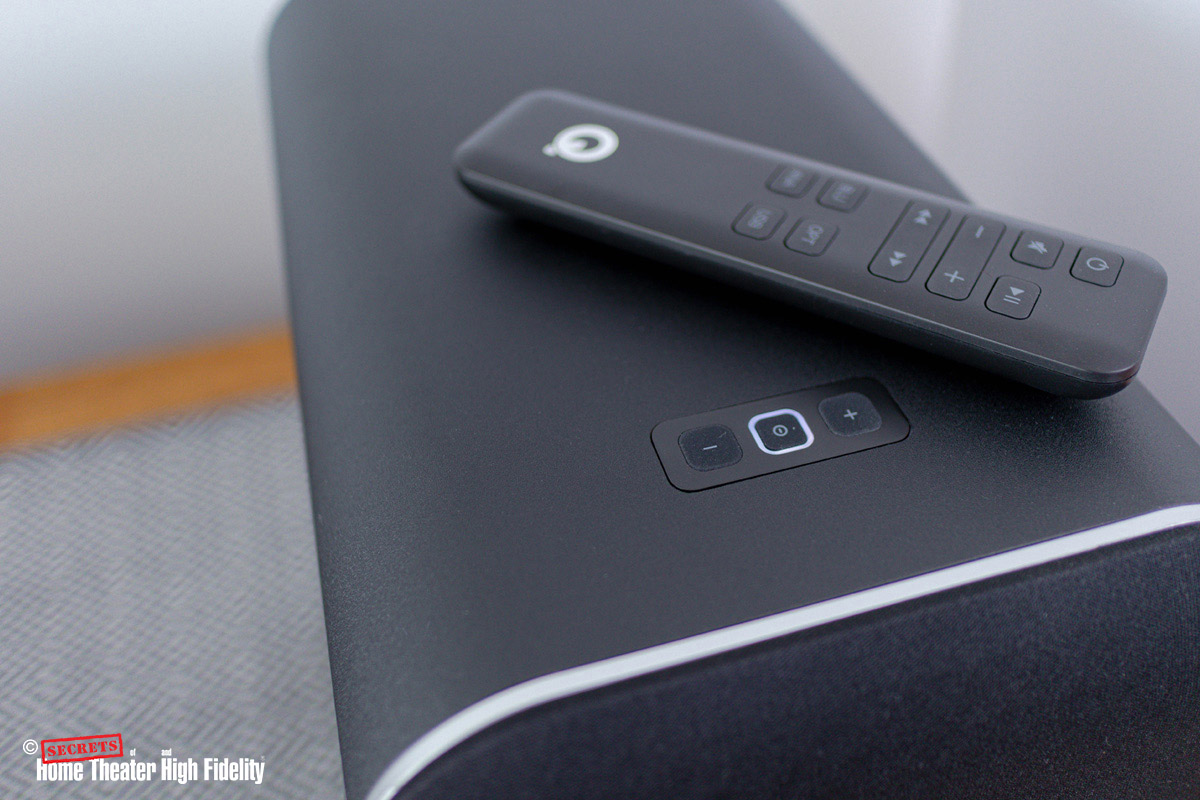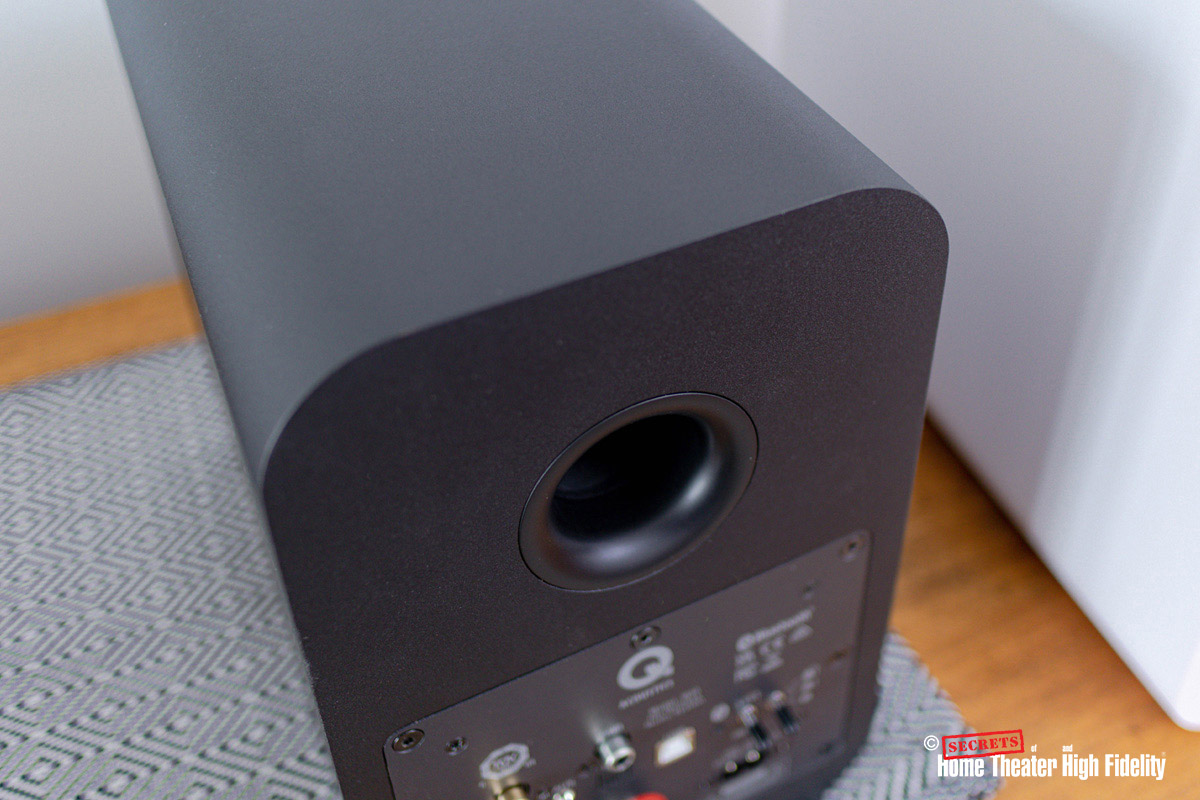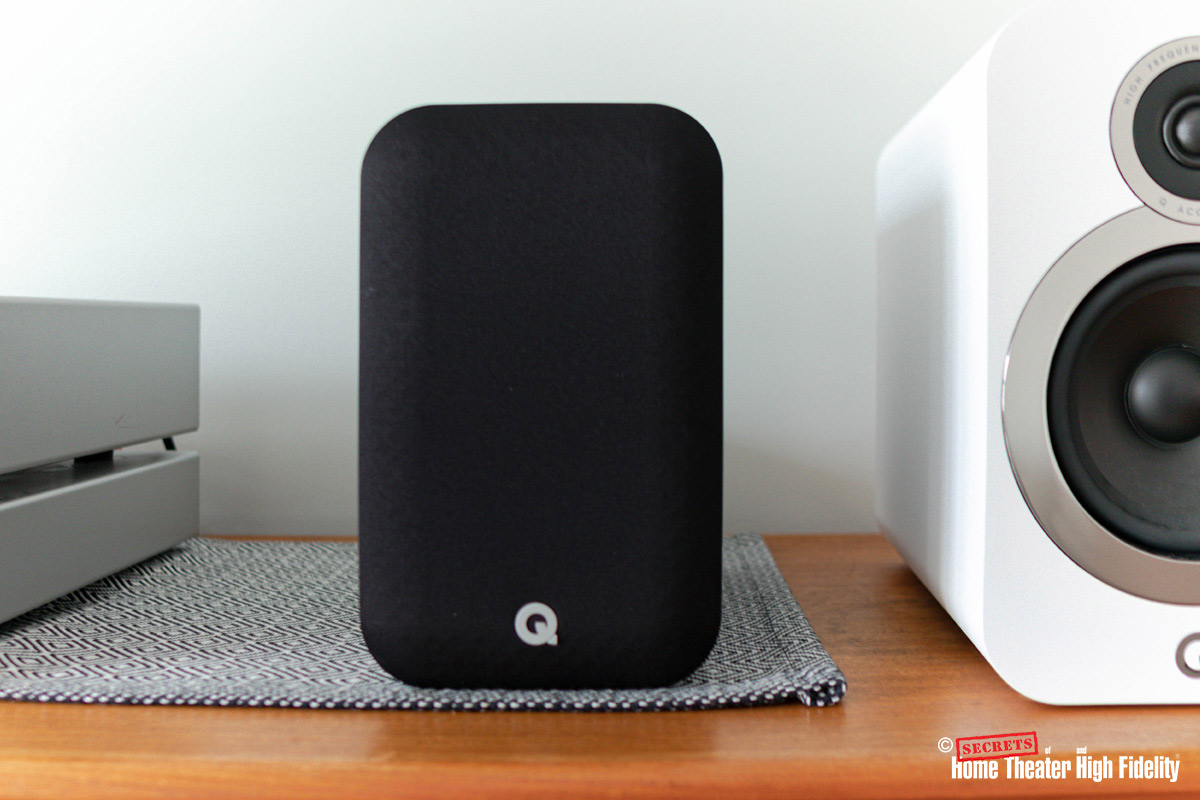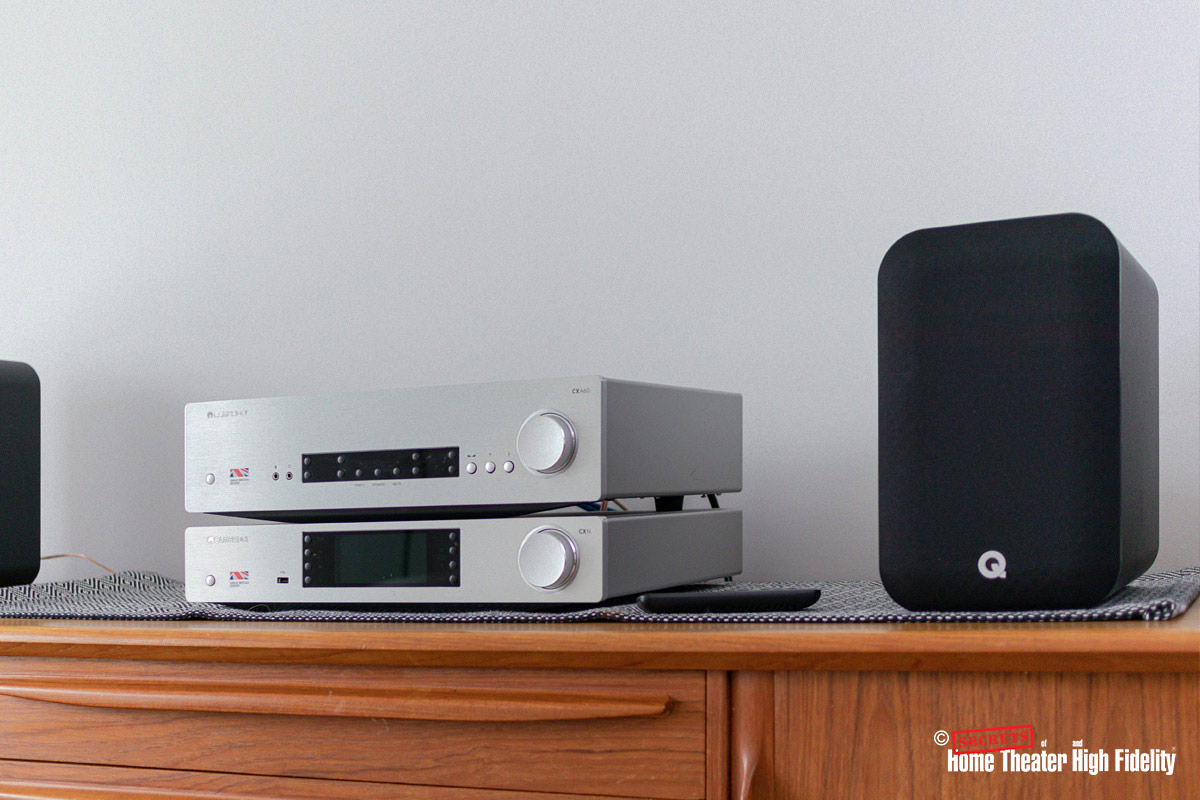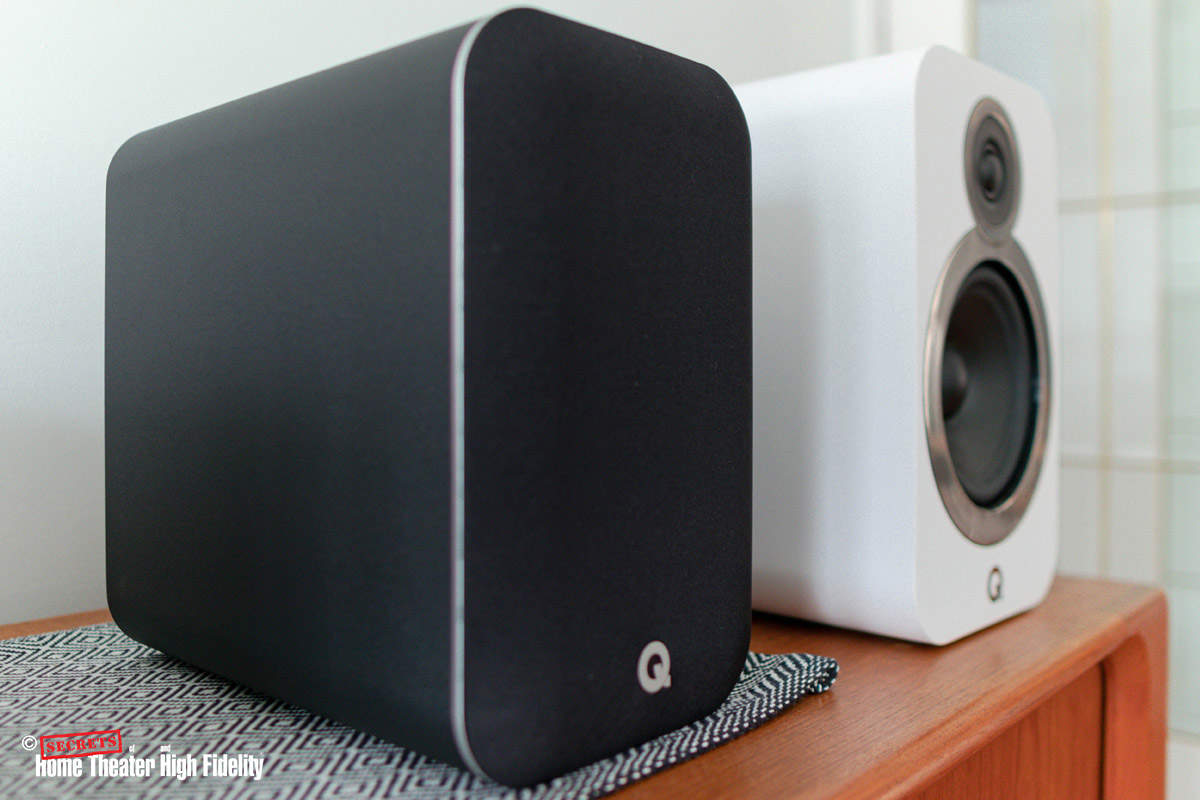Q Acoustics is now onto its second offering in the powered speaker space (or third depending on how you look at it) but separates them by subcategories as they differ a little. The first, ‘Q Active Series’ consists of the 200 Bookshelf and 400 Floor-stander. The Q Active Series is a stereo speaker system where each driver has its own dedicated amplifier and the crossover in each speaker is active, providing the most precise voicing. The Powered series is a stereo speaker system where carefully matched amplifiers are built into one passive speaker with a connection to a second passive speaker via a speaker cable. This brings us to the subject of this review, the M20 HD Bookshelf.
Q Acoustics M20 HD Bookshelf Speaker
- Powered bookshelf speakers
- Ported cabinet delivers bass to 55Hz
- 65-watttt internal amplifiers
- Bluetooth 5.0 with aptX, USB, optical, and RCA inputs
The ‘Powered Speakers’ category has seemingly grown exponentially over the last few years. Manufacturers seem to be including all the features that manufacturers of integrated amplifiers have taken forever to… well, ‘integrate’ into amplifiers. It might be that Powered Speakers are more consumer-oriented versus niche audiophile-targeted products. Being more of a Hi-Fi enthusiast versus a hardened audiophile myself (yeah, I said it), I’m glad it’s a thing.
Tweeter:
22mm (0.87 in)
Mid-Bass / Driver:
125mm (4.92 in)
Frequency response:
55Hz – 22kHz
Crossover frequency:
2.4kHz
Inputs:
- Bluetooth® 5.0 (with aptX™, aptX™ HD, aptX™ Low Latency, SBC, and AAC compatibility)
- USB (24bit/192kHz compatibility)
- Digital optical (24bit/192kHz compatibility)
- Stereo RCA (line level)
- 3.5mm (line level)
Power:
2 x 65w
Cabinet type:
Two-way reflex ported
Dimensions:
279mm (H) x 170mm (W) x 296mm (D) (11 x 6.7 x 11.65 in
Weight:
5.1kg (11.25 lbs.) (passive speaker)
5.5kg (12.2 lbs.) (powered speaker)
Q Acoustics M20 HD Bookshelf Speakers Price:
$599
In The Box:
- 1x Powered M20 speaker
- 1x Passive M20 speaker
- 1x Remote handset (including batteries)
- 1x Speaker Cable (4 meters)
- 1x Optical Cable (3 meters)
- 1x US Power Cord (2 meters)
- 2x Foam Port Bungs
- 1x User Manual
Website:
Company:
SECRETS Tags:
q acoustics, M20 HD, bookshelf speakers, stand-mount speakers
The M20 HDs are sized about the same as the 3020i and carry over the same industrial design cues from the 3000i series with deep cabinets, rounded corners, flat style binding posts, and rear-firing reflex ports. Like the 3000i series, the M20 also features P2P™ (Point to Point) cabinet bracing. It is essentially a powered version of the 3020i with some DSP eq thrown in to help the user (you) augment the sound characteristics of the sound depending on how you place them. Like most speakers in this category, one of the pair is the mains-powered ‘master’ or control speaker. The other is connected via the supplied cable. Interestingly, the back of the control speaker has a switch allowing you to set it as either the left or right channel. This is handy if you want to keep cables hidden or outlets aren’t strategically placed.
Secrets Sponsor
So, what separates these from something like the Fluance Ai61?
The first is price. It costs about twice as much. The second is design. With all due respect to Fluance, Q Acoustics is decidedly more design-forward and feels more premium. I would put the M20 HD more in line with the Kef LSX, and Kanto TUK in terms of aesthetics and price, though I have yet to hear the latter two myself.
The Fluance Ai61 is bereft of a front grille leaving the delicate soft domed tweeter vulnerable to my three-year-old’s wayward fingers. The M20 HDs come with grills, but they cannot be removed. I’m torn on this one. On one hand, I like the look of these speakers overall, but I do wish the grills were removable. Not being able to see the drivers kind of bugs me. I spoke with the Q Acoustics rep about the removable grilles and the explanation was that the M20 is part of their media series, which includes the M2 Soundbase, M3, and M4 Soundbars, all of which have fixed grilles. The control speaker also doesn’t feature a multi-function knob on the front. Instead, there’s a power button that sits on top that is ringed by an LED light. The light changes color indicating which source is selected (Bluetooth, optical, analog, or USB). On either side of it are volume up and down buttons.
The built-in amplifier provides 65 watts per channel of digital power. The 22mm tweeter is decoupled, to minimize any internal vibrations that can adversely affect the audio, while the 125mm mid/bass driver and rear-firing reflex port in each speaker support the midrange and bottom end. The M20 HD is also significantly deeper than the Fluance Ai61. The deeper cabinet helps provide for a big, full sound.
And what’s similar?
The feature set is, on the surface, very similar. You get all the same connections. You can connect and stream from all the popular music services. It also features optical in, analog in, a mini-jack, and USB type B in (24bit/192kHz). The M20 HD features Bluetooth® aptX™ HD (up to 24-bit/48kHz) connectivity for wireless streaming from smartphones, tablets, laptops, and network streamers. And you get a subwoofer output.
The supplied remote is of a similar size. I feel as though (for all my complaining about Hi-Fi remotes), that manufacturers of powered speakers have gotten it right. It’s a simple one-button per function remote. You can control all the major functions, Power, volume, skip forward and backward, and source. One omission is the DSP EQ. Although it is understandable as the EQ is selectable via switches on the back. Included in the box are a power cable, speaker cable, an optical cable (amazing), two foam port bungs, and the user manual.
Also similar is that the M20 HD and Ai61 feature similar cabinet finish choices – white, black, or walnut. My review sample arrived in Classic Matte Black which is more of a dark grey matte but is elegant, nonetheless.
For most of my reviews, I do a fair amount of off-axis listening. I sat them on either side of my DJ setup, positioned just behind and off to the right of my workspace. I listen to everything from podcasts, YouTube content, movies, and music. For me, off-axis passive listening never really requires twiddling the volume dial, it stays at a reasonable background level for most of the day.
My active listening, which I have done more now that I review audio gear, is a bit different. I try my best to set up speakers in an environment that will give them the best chance while also mimicking a real-world setup. In my living room, I paired the M20 HDs with a Cambridge CXN V2 Streamer which is usually connected to a CXA60 Amplifier that sits on the large sideboard against the feature wall.
I would have preferred a traditional bass and treble eq because I do love me some tone controls. I tend to keep the back eq switches in the middle for a bit of a bump of the upper bass. It sounds thicker overall. Having them all the way down sounds too plump and all the way up is too thin. On the M20 HD, it takes a bit of finesse to get the switches to stay in the middle. I have the speakers about 7-8 inches away from the wall. Q Acoustics supplies foam port bungs to help augment the sound by lowering the bass output. The speaker doesn’t remember the last used input when you fire it up but defaults to the digital connection, kind of a pain, but not a deal-breaker.
So yeah, it sounds good. Surprise, surprise, right? Just like the 3020i, I enjoy the overall sound stage. It isn’t exactly the same as the 3020i mind you. The treble rolls off the top a touch, and I feel as though the DSP has a hand in making the overall tone rounder and warmer. Less flat in presentation, the M20 HD sounds U-shaped in frequency response, with a bump in the bass and highs. The mid-range sounds slightly recessed. This can be changed using the eq settings in your player of choice. The soundstage is good, not too expansive
A sub is truly required for the lower depths. While the deeper cabinet helps with the soundstage and DSP helps augment the eq, these are still relatively small speakers. And you notice it if you’re a bass fiend like me. They’re made for a smaller room, like an office or bedroom. However, on the flip side, my family room, which is a fair-sized 15’x25′ space, has a pair of 3020i’s as fronts with the 3090ci as a center channel (without a sub or surrounds for now le sigh…) and I’m not left wanting for more volume (especially when Paw Patrol is on). The sound is surprisingly big and full, with a grunt that belies its size. Man, I can’t wait to fit a sub and some surround speakers into this space. I tried the M20 HD placed next to the 3020i to see if there was a disparity between them. There wasn’t, sound signature aside, the M20 HD was able to adequately fill the room.
Q Acoustics has smartly made sure to include a gaming setup in their promo photography. It makes sense as powered speakers are a great upgrade to any desktop. I’m not a gamer myself but I have set these up at my workstation for day-to-day listening. On my desk, they work quite well and provided great sound during my workday. The M20 HD is a big step up over the built-in speakers of any external display monitor. And so long as you’re not after a flat response like a studio monitor, you’re in for a treat. Unfortunately, I couldn’t get my Ableton music production software to recognize the speakers when connected via USB. There was no sound for some reason and I decided against trying to troubleshoot the issue, mainly because they are not voiced to deliver a flat frequency response. And mixing with them would be less than ideal. Having powerful speakers in a nearfield listening position is especially nice when you’re taking a break from work to enjoy some music or take in a video. These speakers can blow your hair back and immerse you in sound.
Moonfall
I’ve admittedly watched this an embarrassing number of times. It’s my new disaster movie of choice. Moonfall fits into the ‘it’s so bad that it’s good’ category of movie watching. Watching bad movies while working on some of the more mundane daily graphic design tasks is routine for me. Plus, I don’t really miss anything if I’m not glued to the screen. Every crash and explosion and loud a$$ special effect is as hard-hitting as the last. These speakers are perfect for desktop movie watching. Throw a sub like my B&W 610 into the mix and its overkill in all of the best ways. With the volume cranked I roll my chair back a few feet and take in the experience on my 27″ 4K Display. I’d pick these up for this experience alone. With the volume turned down, the M20 HDs are an easy listen. In that, I’m able to pick out dialogue with ease. Bass and low-frequency effects seem full and deep while the highs are clear while not edging on tinny, shrill, or grating at all. While they are marketed to be desktop gaming speakers, I found that I enjoyed them best when they are set up in a more traditional fashion.
Next, I tried the M20 HDs in place of the Fluance Ai61s as our Peloton speakers. Here’s an excerpt from that review to get you up to speed:
“The Ai61’s sit on a low media stand about 20′ in front of the bike’s position. Not ideal by any circumstance, but it gets the job done. Thanks to Alex Touissant’s low-impact ride, I have Musiq’s classic Just be Friends in my head on the regular. What a tune, and a great way to start the day! With the volume low, I can still get a good sense of the music. For some reason, the max volume from the Peloton via Bluetooth to the Ai61s isn’t party-level loud. In a small room, this isn’t an issue as the vocal mix is much louder than the music and the instructors talk a lot. Almost too much for my liking. I wish they adjusted the mix so that the instructors didn’t overpower the music. Bluetooth isn’t always constrained to a small volume parameter mind you.”
Secrets Sponsor
Given the Peloton’s low Bluetooth volume output, the M20 HD performed admirably. With the tone switch set to the down position for added bass weight, the sound was able to fill our largeish basement and make for an enjoyable ride. It was here where I would have liked a larger version of this speaker, possibly a version that builds off Q Acoustics’ own 3030i Bookshelf. I love that speaker and I believe that the larger driver cabinet would be a major benefit, more bang-for-the-buck so to speak.
With that in mind, the next setup was in place of the large Q Acoustics 3030i Bookshelf Speakers in our living room. I paired the Cambridge Audio CXN V2 Streamer to the M20 HDs for streamer duties and connected the QB12 Subwoofer for some additional thump. Our sectional couch places our listening position about eight feet back from the speakers which sit a tad above ear height on the sideboard. I found this to be the most ideal setup for the M20 HD, and most likely where a fair share of the prospective buyers of this product will end up placing them. Casual listening at moderate volumes is a pleasure. As with other speakers from Q Acoustics’ 3000i series, the sonic character is relaxed while maintaining a decent amount of oomph. These are not neutral or clinical in sound at all, which makes taking in your favorite music easy.
Waiting in Vain – Bob Marley and the Wailers
Our morning routine is chaos. Getting our two hooligans off to school proves to be a daily struggle that is made somewhat easier by the sounds of reggae music to play us out the door. I’m not sure if it’s psychological on my part but I feel like ‘Waiting in Vain’ gets our three-year-old son Milo to put on his clothes easier. It is either that, or it makes me feel there is a fresh banana daiquiri waiting for me when the job is done. In any case, it helps. I think. Most of the time we’re listening off-axis or in another room entirely, but for this review, I made sure to plop myself down on the couch to take it in properly, and to take a load off after the morning ordeal. Man, it’s something. It is the part of this gig that never gets old; taking in a new speaker for the first time with music that you’ve heard hundreds of times before. It makes the music seem brand new. Now granted I’ve never heard this song played anywhere on any system that sounded bad. It’s a well-written and mixed, song and its sunny vibes sound great on anything. Through the M20 HDs paired with a sub, I’m ready to party at 9:15 am. If you’re reading this and are not an audiophile and just want a pair of no-fuss speakers to enjoy some sunny reggae vibes, then I’m here to tell you to buy these now. It’s fantastic. If I were to make the obvious and unfair comparison to the 3030i’s it would be that the soundstage is smaller, but that’s a given just based on physics.
The final pairing was of course with my DJ set up in my basement studio.
Just like the Fluance Ai61s, they made for an easy pairing. And while I have a fair amount of electronics set up, if I were resigned to just the M20 HDs, I would be quite happy. Hell, in my younger, single condo dwelling days, a pair of these would have served as the workhorse speakers for every single application: DJ set up, Hi-Fi, and TV.
The Q ACOUSTICS M20 HD BOOKSHELF SPEAKERS offer much of the performance of more expensive competition at an attractive price. Their aesthetic alone put them in a premium category.
- Great build
- Good looks
- Ample connectivity
- Included optical cable!
- Traditional EQ
- Removable grills
- A larger cabinet version
There are other speakers that can provide equal measures of value and great sound. Take the Fluance Ai61 speakers that I just reviewed. They offer a very similar specification for less money. However, if you factor in style pedigree, then I can justify the premium. Apple has famously priced its products higher because they offer a design that other manufacturers don’t. The Q Acoustics M20 HD Bookshelf Speakers slot in well against the competition and while I have not heard the Kef LSX series, I would put these in competition with those in terms of pricing. Q Acoustics has a great product on offer here and if you value style and a great build and don’t mind paying for it, these speakers are worth an audition. I like the Q Acoustics M20 HDs a lot. They fit right into the product category as a very viable option. And should be shortlisted as an attractive option.


